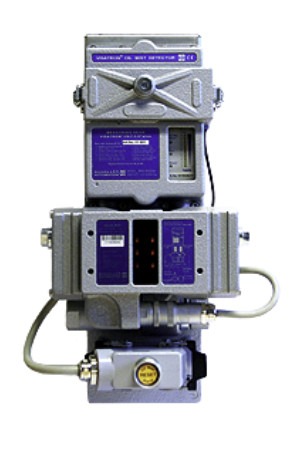Visatron VN116/87Plus
VISATRON VN 116 series as compared to the VN 115 series, is more sensitive because it has an additional differential alarm level.
It compares the oil mist concentration from each side of the heeder-suction- tube section and responds if there is a difference, this being a sure sign for an overheating damage in the compartment group with the higher opacity.
The differential alarm level is carried along with regard to its sensitivity relating to the 10-stage adjustment of the alarm level which is also available for VN 115. For measuring the opacity differential, the sample flows of both header-suction-tube sections are fed to the turbid metric channel one after the other by closing the respective tube sections alternately by means of reed valves.

The microprocessor saves both opacity values and executes the opacity comparison (damage check). In home position both valves are open. They only become operative if the compound opacity from both header-suction-tube sections exceeds the sensitive threshold for starting the damage check. This will trip an alarm if the decisive differential alarm level is being exceeded. At the same time it is indicated in which compartment group the damage has occurred.
Oil mist is explosive from a concentration of 50 mg of atomized oil in 1 liter of air = 40% OP, ignition temperature of approx. 500 C. It is important that the opacity value exponentially depends, upon the oil mist concentration, i. e. it is already very high in case of a minor turbidity. Therefore, turbidity measurement with the header-suction-tube system can also reach a high sensitivity (e.g. 0,5% OP= 0,1 mg/l of oil mist) from a damaged compartment mixed with crankcase atmosphere from the other compartments is diluted in the header-suction tube. In case of medium speed trunk-piston engines the compartment volumes are relatively small compared with the crankcase of crosshead engines so that the oil mist has developed from an overheating damage will rapidly

